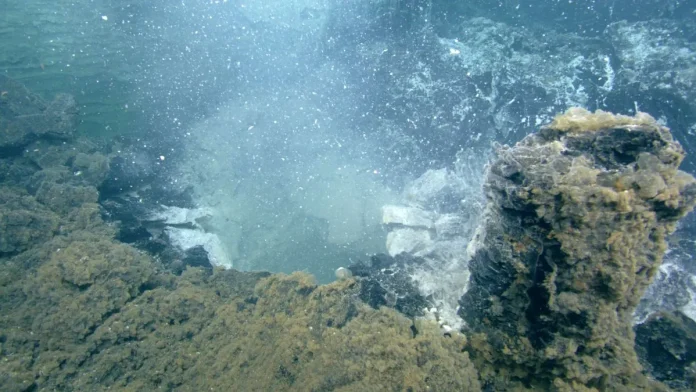An underwater volcano off the coast of Oregon is showing signs of an impending eruption. This eruption could trigger thousands of small earthquakes.
The Axial Seamount, located about 300 miles offshore, is growing increasingly active. Magma has been accumulating beneath its surface. The last eruption in 2015 caused around 8,000 earthquakes and produced lava flows that reached up to 400 feet thick.
Indicators pointing to imminent eruption
Researchers have observed a key sign of an impending eruption. The seafloor is swelling significantly, suggesting magma is building up underneath. The inflation levels are already higher than before the 2015 eruption.
William Wilcock, a marine geophysicist at the University of Washington, explained that some scientists believe inflation could predict when the volcano will erupt. If this theory is correct, the eruption could occur at any time.
Experts stress that this eruption will not harm people on land. The volcano is deep underwater and far from the coast. The seismic activity will not be felt in the United States, despite the large number of earthquakes.
Increased seismic activity and eruption predictions
The Axial Seamount is part of a chain of underwater volcanoes along the Juan de Fuca Ridge, stretching from Oregon to Alaska. It has erupted three times in the past 30 years, making it the most active volcano in the Pacific Northwest.
This volcano is one of the most monitored in the world. Mike Poland, a scientist at the Yellowstone Volcano Observatory, said, “It’s probably the best-monitored submarine volcano in the world. It’s fascinating but doesn’t pose a hazard.” He noted that when Axial Seamount erupts, it will resemble a Hawaiian lava flow, with lava flowing gently from the caldera.
Currently, the region is experiencing more than 500 earthquake swarms each day. These swarms are clusters of small earthquakes, indicating that magma is gathering beneath the surface.
Wilcock added that shortly before an eruption, there is a brief period of intense seismic activity that lasts about an hour. After that, magma will reach the surface. The seismic activity will decrease, but the eruption itself could last for up to a month.
Monitoring and predictions for 2025
Scientists predict that Axial Seamount could erupt by the end of 2025, marking 10 years since the last eruption. Previous eruptions occurred in 1998 and 2011. However, the volcano has had intermittent eruptions for much longer.
William Chadwick, a geophysicist at Oregon State University, explained that the volcano has a constant supply of magma. “If it’s not erupting, it’s inflating and preparing for the next eruption,” he said. This activity makes the volcano a focus of constant monitoring.
Potential impact of underwater eruptions
While this eruption will not affect land-based communities, underwater volcanoes can sometimes cause widespread damage. In January 2022, an eruption of the Hunga volcano in the Tonga archipelago triggered a tsunami. This caused an estimated $90 billion in damages and affected areas including Tonga, North America, Japan, New Zealand, Fiji, and Peru.
